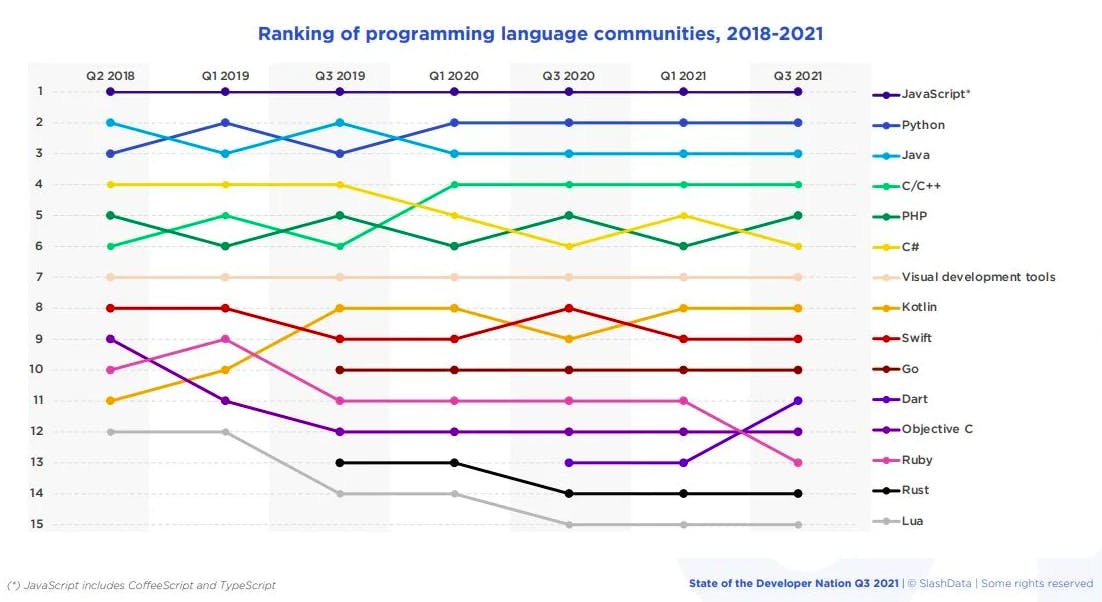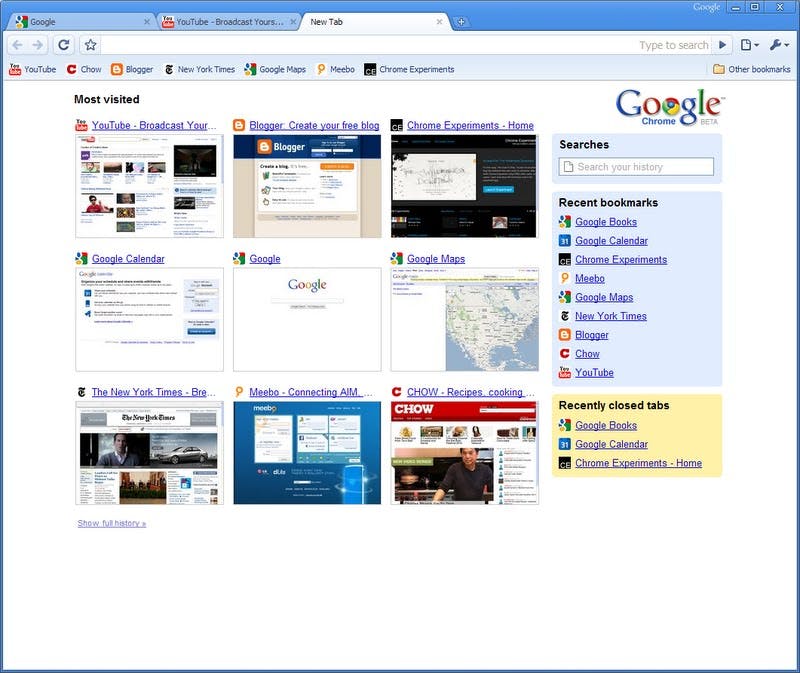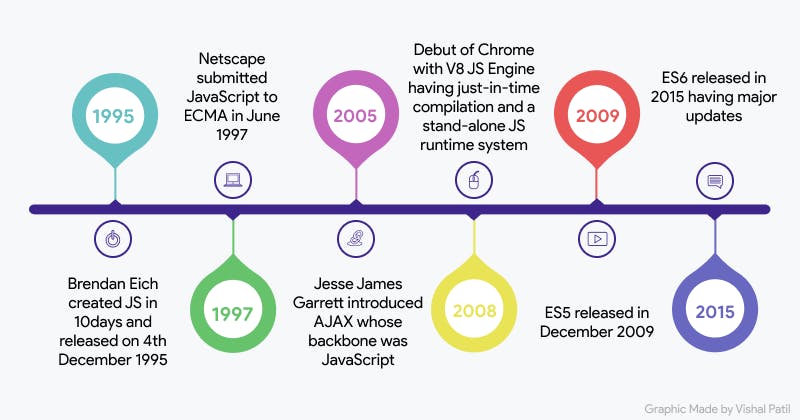The Evolution of JavaScript
A brief History of the Hottest Programming Language for Web development
Some background
In recent times JavaScript has become one of the most popular programming languages. It is ruling over the web with 97.6% of the market share according to W3Techs. JavaScript is a programming language that is the core technology of the World Wide Web alongside HTML and CSS. Understanding the evolution of JavaScript is essential for every developer.

Ranking of Programming language communities
1995 - The foundation stones of JS
Netscape was dominating the browser market with Netscape Navigator in 1995. They decided to add a scripting language to Navigator. The work was assigned to Sun Microsystems to embed Java into the web and parallelly Netscape also appointed Brendan Eich to create their own scripting language. Brendan worked hard for 10 days and created the first version of JavaScript which was initially named Mocha by him which then became LiveScript when it was first shipped in September 1995. Very soon during its official release on 4th December 1995, it was renamed JavaScript. But why so? Let's understand this. During that time(in 1995) there was a hype surrounding Java, thus the name JavaScript came into existence as a part of the marketing campaign to gain developer attention.
1997 - Adoption by ECMA
Netscape soon submitted JS to ECMA(European Computer Manufacturers Association) International to Standardize the specifications that all browsers could adhere to. Thus, ECMAScript language specification was officially released in June 1997, and Internet Explorer became the first browser to support ECMA-262 Edition 1(ES1).
2005 - Major Breakthrough
Major breakthrough for JS came in 2005 after Jesse James Garrett introduced AJAX to the world in his papers. AJAX was a suite of technologies that included JS as its backbone and thus pushed it into the spotlight as a professional programming language.
2009 - The Golden Era for JS
After an event in 2008 in Oslo, the ECMAScript 4 proposals were backed by many organizations like Yahoo, Google, and Microsoft which were the front runners in developing browsers. This resulted to combine all relevant work and drive language forward and thus ES5 was released in December 2009. ES5 was a huge success and thus by 2014 ES5 achieved full compatibility support in all browsers. Google debuted Chrome browser in 2008 with V8 JS Engine that was way faster than its competitors. The key innovation in V8 was Just-in-time compilation(JIT) and a stand-alone JavaScript runtime system in the Chrome browser. In addition to it in 2009, Ryan Dahl created Node.js which sparked an increase in the usage of JavaScript outside of web browsers.

The very first beta version of Chrome!
2015 - ES6 The major update to JS
ES6 was released in 2015. It was the second major revision made to the language. The major introductions of ES6 were arrow functions, object literals, modules, block scoping, promises, scope, let & const, and many more...

Timeline of JavaScript
Conclusion
In 2022, JS has become the de-facto standard programming language of the web. It is evolving each day with time and community support is growing exponentially, so start learning JS today. I hope this helps you love JS even more.

